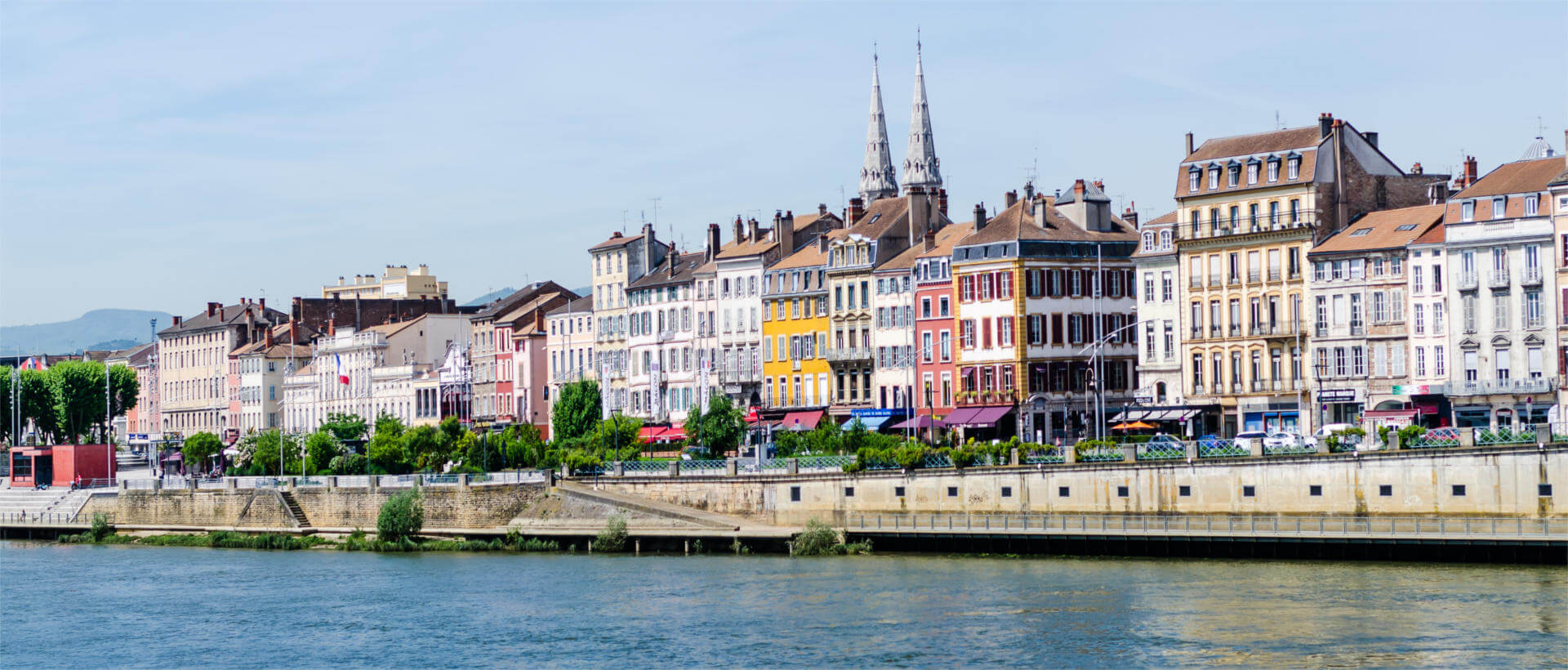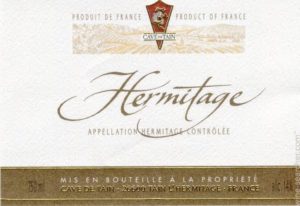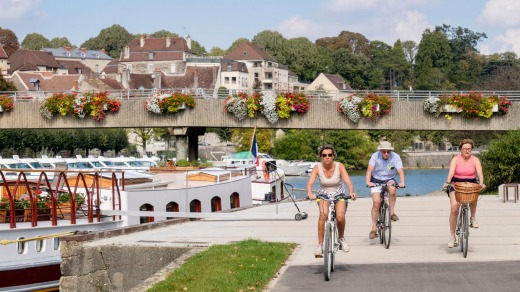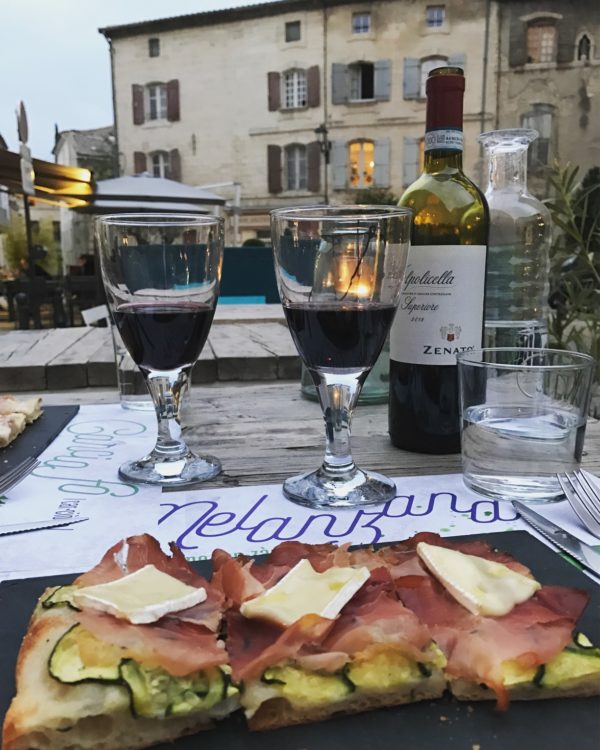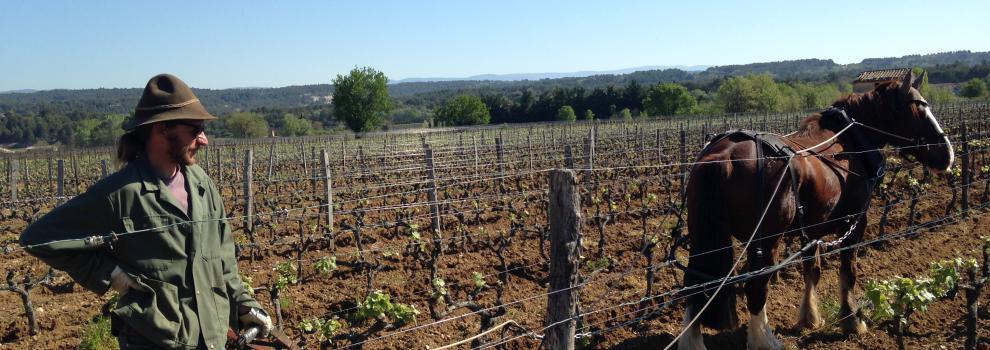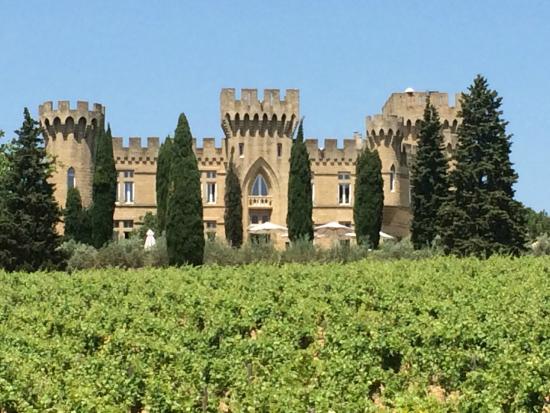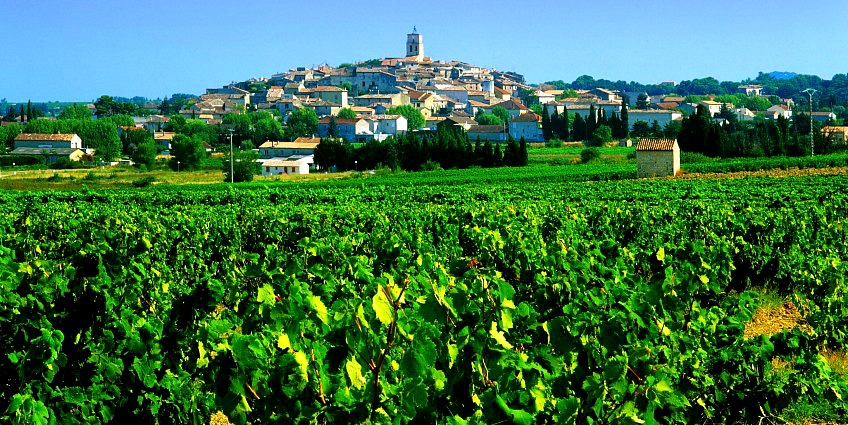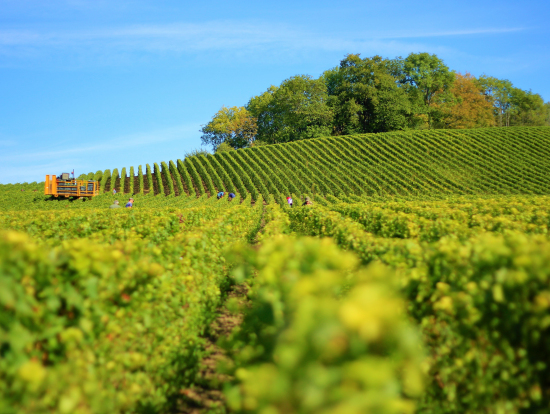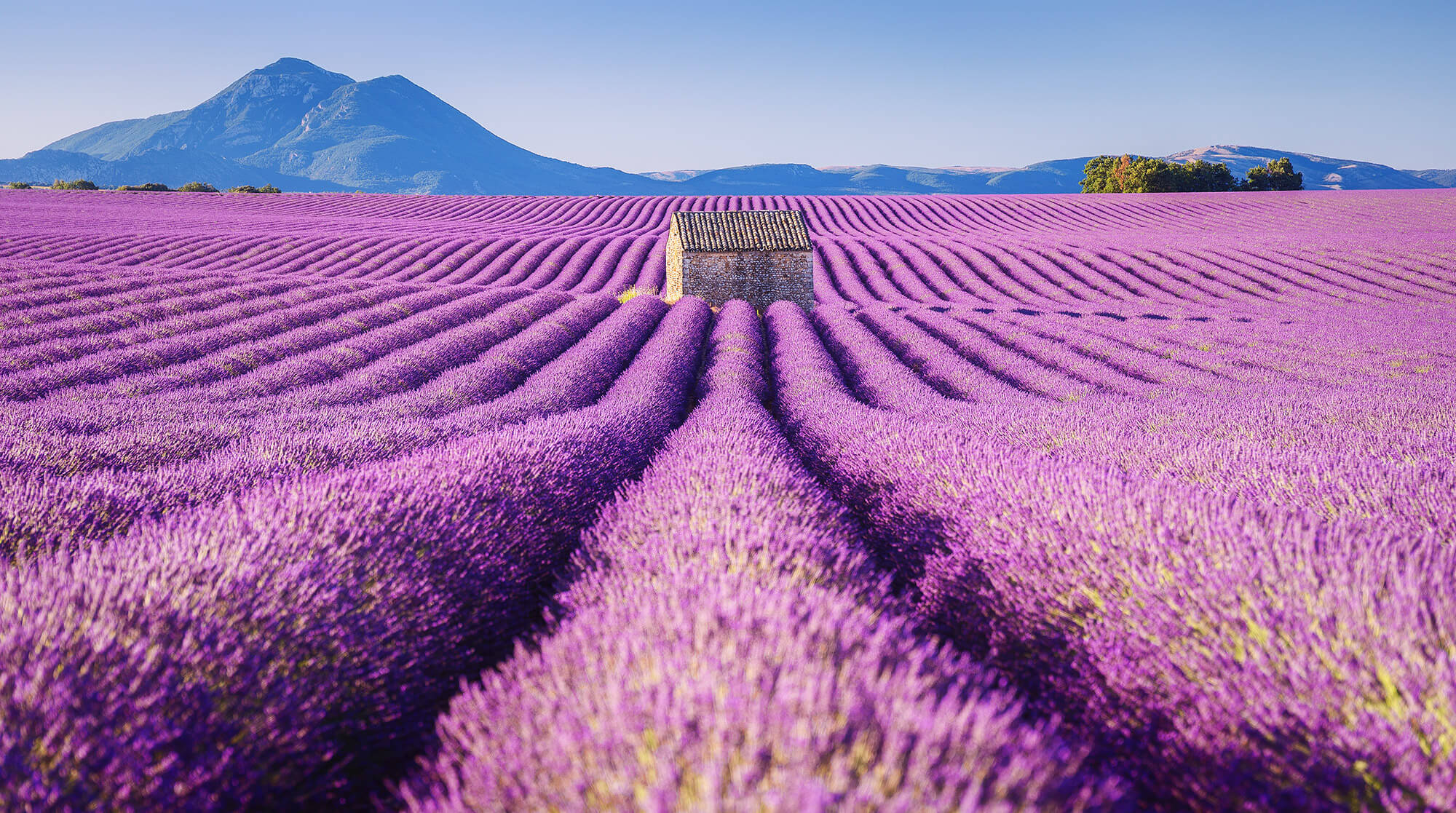Day 1
Lyon (Embark)
Arrive at Lyon–Saint-Exupéry Airport. If your cruise package includes a group arrival transfer or if you have purchased a private arrival transfer, you will be greeted by a Uniworld representative and transferred to the ship.
The pace of life is decidedly more relaxed in Burgundy, where endless rows of grapes hang heavy on the vine. The capital of the region’s wine trade, Beaune, is renowned for its history, beauty and highly prized wine, as well as its medieval-era hospital—the Hospices de Beaune. Located in the southernmost part of Burgundy, Mâcon, a Saône River port, is your gateway to Beaune.
A special Captain’s Welcome Reception and Dinner will be prepared for you this evening.
Featured Excursion:
Choice of Burgundy wine landscapes, Beaune, Hospices de Beaune or Mâcon walking discovery tour
Burgundy wine landscapes, Beaune, Hospices de Beaune
Beaune may not be a large town, but it brims with history, a wealth of splendid regional architecture and incredible food. Nestled inside medieval ramparts, Beaune was the seat of the warlike dukes of Burgundy until the 16th century. You’ll recognize the Hospices de Beaune (also known as Hôtel-Dieu) immediately by its fabulous multicolored-tile roof—it’s a symbol of Burgundy. Founded as a charitable institution by the duke’s chancellor in 1443, the hospital became a model for charitable giving in southern France, one with a unique fundraising tradition that continues to this day. Over the centuries, the hospice monks were given wine and vineyards, and they began selling the wine at auction in order to support their charitable work. The wine auction is now world-famous, and the institution remains a working hospital for the poor, with modern facilities standing alongside the historic Hôtel-Dieu.
Mâcon walking discovery tour
The man whose impassioned defense of France’s famous tricolor flag guaranteed its continuance as the national flag was born in Mâcon, your destination today. Alphonse de Lamartine, born a year after the French revolution began, became the country’s first Romantic poet and a celebrated man of letters—and, in 1848, a founder of the Second Republic. You’ll spot his statue opposite Mâcon’s city hall as you stroll from the ship with your guide through this historic riverport city, which has been an important trading center since the Celts founded it 2,200 years ago. The Romans built a bridge across the Saone here, and you’ll have a great view of its 16th-century successor, the graceful multi-arched St. Laurent bridge, from the square. Ramble down Rue Monrevel for a look at the twin towers of St. Peter’s, the church that replaced Mâcon’s medieval—and irreparable—cathedral and then along bustling Rue Carnot, lined with shops and cafes, to a curious wooden house that predates the bridge: Maison de Bois’s facade is decorated with carved figures of men and monkeys—standing, sitting, holding onto mythical beasts. It’s the oldest house in Mâcon, built around the year 1500, and one of just a few remaining examples of this rustic medieval style of architecture.
Day 3
Lyon
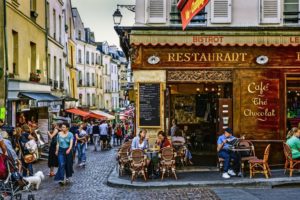 As the epicenter of French gastronomy, Lyon is a city of tantalizing contrasts. There’s much to explore here, from the work of culinary visionaries to silk weavers’ secret passageways. After your choice of excursions, embrace the locals’ favorite mode of transportation with a patisserie-fueled bike ride—a great way to see the sights. Two rivers: one tranquil, one torrential. Two hills: one for labor, where the sound of the silk weavers’ looms used to echo; the other for prayers, crowned by a spectacular basilica. Two cities, as different as night and day: one boasting colorful Old World façades, medieval mansions and hidden passageways; one with a sophisticated urbanity reminiscent of Paris. Situated at the confluence of the Rhône and Saône rivers, and with roots stretching back over 2,000 years to the days of Julius Caesar, Lyon is a place of fascinating dualities. Today you have your choice of ways to explore this city of contrasts: Sample its culinary riches with a visit to its peerless market hall or follow the footsteps of the silk weavers in the old quarter. For a more active option, see the city from its extensive—and lovely—bike paths.
As the epicenter of French gastronomy, Lyon is a city of tantalizing contrasts. There’s much to explore here, from the work of culinary visionaries to silk weavers’ secret passageways. After your choice of excursions, embrace the locals’ favorite mode of transportation with a patisserie-fueled bike ride—a great way to see the sights. Two rivers: one tranquil, one torrential. Two hills: one for labor, where the sound of the silk weavers’ looms used to echo; the other for prayers, crowned by a spectacular basilica. Two cities, as different as night and day: one boasting colorful Old World façades, medieval mansions and hidden passageways; one with a sophisticated urbanity reminiscent of Paris. Situated at the confluence of the Rhône and Saône rivers, and with roots stretching back over 2,000 years to the days of Julius Caesar, Lyon is a place of fascinating dualities. Today you have your choice of ways to explore this city of contrasts: Sample its culinary riches with a visit to its peerless market hall or follow the footsteps of the silk weavers in the old quarter. For a more active option, see the city from its extensive—and lovely—bike paths.Exclusive guided “Let’s Go” Lyon peninsula bicycle tour
Choice of Exclusive “Do as the Locals Do” Lyon walking tour or Exclusive silk weavers walking tour
Exclusive “Do as the Locals Do” Lyon walking tour
No one eats better than the citizens of Lyon, a tradition that harks back more than a century, when women opened unpretentious restaurants, called bouchons, to feed hungry workers. The traditional bouchon serves hearty meat-based dishes, but quenelles—luscious dumplings—and a seasoned cream cheese called cervelle de canut are longtime local favorites too. While explaining Lyon’s important gastronomic history, your guide will show you the city’s bouchons and specialty food shops and take you into the legendary main market, Les Halles de Lyon Paul Bocuse. There you’ll find stalls brimming with local produce, fish, game and cheeses, all beautifully displayed on black marble countertops— and you’ll have a chance to taste some of these delectable offerings. Don’t miss the macarons! On the way to these fabulous culinary destinations, you’ll see some of Lyon’s historic old quarter, with its many spectacular examples of medieval and Renaissance architecture, and les traboules, the city’s old passageways.
Exclusive silk weavers walking tour
Lyon’s history is entwined with silk, which dominated the city’s economy for centuries—at one time, almost a third of the city’s population were silk weavers. Jump on a tram and head for Lyon-Perrache station with your guide, who will take you into the historic Saint-Jean Quarter, part of the UNESCO-honored Old Town. The Gothic cathedral is probably the most striking heirloom of the Middle Ages, but the tall rose and ocher buildings dating to the Renaissance pay tribute to the importance of the silk trade with Italy in that era. Enter the courtyard of the Gadagne Museum, which is housed in an early16th- century building, and stroll along Rue Juiverie, which has been occupied since Roman times and was once home to Nostradamus. You’ll see some of the traboules, the old passageways that snake between and through buildings, secret shortcuts that silk weavers took to keep their delicate fabrics out of the rain. You’ll pass cozy bouchons, which serve traditional local dishes, and you’ll have a chance to see a Jacquard loom in use.
Exclusive guided “Let’s Go” Lyon peninsula bicycle tour
Get out and about with a bike ride along the river. Lyon boasts a thriving bike-rental scene, which tells you just how popular this mode of transportation is—you will definitely have two-wheeled company as you pedal along the banks of the Rhône on a sunny day. Your route takes you over the new Raymond Barre Bridge, past the spectacular new Museum of Confluences (so named because it sits at the confluence of the Rhône and the Saône) and along the peninsula, a strip of land with the Saône on one side and the Rhône on the other. Here, houseboats tie up along the banks, swans float on the water and locals take advantage of the lovely park like setting. You’ll also have a great view of the Old Town on the other side of the river. This outing gives you a little taste of what it is like to live in Lyon, as well as a little exercise.
Day 4
Tournon (Tain-l’Hermitage)
If you love fine wine, you’ll love the twin villages of Tournon and Tain-l’Hermitage. Whether you opt for a guided walk or a more vigorous vineyard hike, you’ll also have a chance to taste the local specialty—wonderful wines made primarily from Syrah grapes.
Featured Excursion:
Choice of Exclusive Tournon and Tain-l’Hermitage twin villages stroll with wine tasting or Exclusive guided “Let’s Go” Hermitage vineyards hike with wine tasting
Nestled on opposite sides of the river in the heart of the Côtes du Rhône, the twin cities of Tournon and Tain-l’Hermitage are an ideal destination for connoisseurs of fine wine. Tournon may be a small town, but stirring events took place here: A castle was raised on the hilltop in the 10th century to protect the region, and new fortifications were added over the centuries, including two “new” towers built to defend against Protestant attacks in the 16th century. You’ll see the handsome houses constructed by wealthy merchants and garrison officers when you walk through the Rue de Doux area, and you’ll pass the 14th-century church—unusual for the number of houses incorporated in its walls—and the oldest secondary school in France. Cross the pretty flower-decked Marc Seguin suspension bridge to Tain-l’Hermitage to visit local wine cellars, where you’ll taste the region’s famous Côtes du Rhône, Saint-Joseph and Crozes-Hermitage wines. These wines are produced from the Syrah grapes that grow on the steep slopes lining the river. After your wine tasting, you’ll have time to browse through the shops; the Valrhona chocolate factory is always a popular stop.
Exclusive guided “Let’s Go” Hermitage vineyards hike with wine tasting
Are you ready to explore the steepest vineyards on the Rhône? The vines producing the world-famous Hermitage wines grow on precipitous slopes above the river, so steep that terracing is essential. Hike along the paths that parallel the rough courses of stone through the vineyards, each one situated to catch the afternoon sun. After you’ve seen how the grapes—primarily Syrah—are grown, taste the fruit that has been transformed by the vintners’ craft into legendary wine.
Day 5
Viviers
Meet some new friends today in the village of Viviers; encounters that really get at the heart and soul of the French people and their culture and traditions. No matter whom you get to know—a pottery maker, a dance teacher or a local homeowner—you’ll have an enjoyable and truly authentic experience, something you’ll remember for years to come. An enchanting village where time seems to have stopped centuries ago, Viviers has a long and storied past that goes back more than 1,600 years—and a splendid architectural heritage to match. At one time, Viviers was divided along religious lines—the clergy lived in the upper part of the town, the laity in the lower part. Your exploration of the town will take you through both parts, as you begin at the crest and make your way to the riverbank.
Featured Excursion:
Exclusive intimate Viviers “Village Day”
Sycamores line some of Viviers’ stone-paved streets (planted, so they say, to provide shade for Napoleon’s soldiers), and houses here bear the watermarks of floods over the years. A local expert will show you the fountain squares in the Old Town, which combines Roman and medieval influences, and cobblestone lanes so narrow you can stand in the middle and touch the medieval houses on either side. Viviers climbs a hill crowned by 12th-century St. Vincent’s Cathedral. It happens to be the smallest cathedral in France, but it contains a marvelous organ. Take a seat under the soaring vaults and listen while a local organist demonstrates just how fine an instrument it is before you meet some of the local residents. You might choose to learn how a local potter makes the attractive wares sold at Poterie; step into one of two homes—one a mansion, the other more modest; take a dance class; or sample the wares at a popular bar. Don’t feel that you must opt for the bar if you’d like a little refreshment; all visits include an aperitif. On your way back to the ship, stop to try your hand at a game of petanque, which is akin to horseshoes, only it’s played with steel balls.
Day 6
Avignon
The walled city of Avignon is one of the most fascinating towns in southern France, with a host of historic gems to explore—including the fortress residence of rebellious popes who broke from Rome and once lived and ruled here. You’ll see the Palace of the Popes and much more today, and also have a chance to kayak under a 2,000-year-old Roman aqueduct. Avignon is home to the medieval bridge immortalized in the folk song “Sur le Pont d ’Avignon,” as well as the mighty Palace of the Popes. From a distance, the picture-perfect city center looks as though it has been lifted straight from the pages of a history book, but all you need to do is step inside its medieval walls to discover the prosperous heart of contemporary Avignon.
Featured Excursion:
Exclusive guided “Let’s Go” kayak ride on the Gardon River
Choice of Avignon walking discovery tour with Palace of the Popes or Avignon walking discovery tour with Pont du Gard
It’s hard to believe, looking at the charming cafés and entertaining street performers in the Clock Tower Square, that this lively scene owes its existence to a 15th-century siege. This area was the heart of medieval Avignon (and the site of the original Roman town), crowded with cottages and narrow streets—until a pope had it all demolished in order to give his troops a clearer field of fire. That is Avignon in a nutshell: It was the city of the popes. The Avignon popes built the ramparts that still surround the Old Town and the huge, nearly impregnable fortress that dominates the UNESCO-designated district; in fact, the city did not officially become part of France until 1791. Stand below the high, thick walls to get a sense of just how daunting these fortifications were, then prepare to climb many steps as you tour the Palace of the Popes itself—it’s worth it!
Avignon walking discovery tour with Pont du Gard
In the middle of the first century, Roman engineers responded to Nîmes’s need for water to fill its baths, fountains and pools by building a 30-mile-long aqueduct from Uzès to Nîmes—which required transporting Uzès springwater over the River Gardon. A thousand workers quarried 50,000 tons of soft golden limestone and used it to construct—without mortar—the magnificent tri-level bridge that still spans the river. An expert guide will explain the techniques used to build this engineering marvel, which has withstood 2,000 years of floods and storms that swept away much newer bridges. You can see notations those ancient Romans made in the stones as they cut and fitted them into place when you view the bridge itself, and you can learn about the entire project at the museum. The UNESCO World Heritage Site is as beautiful as it is fascinating.
Slather on some sunscreen and plan to get wet as you spend a couple of fun and relaxing hours on the clear, tranquil waters of the Gardon. Accompanied by a soundtrack of chirping cicadas, you’ll paddle from Collias to Remoulins, spotting trout in the river and water birds on the shores. Your adventure ends with a marvelous view of the arches of the oldest extant Roman aqueduct in France, the 2,000-year-old, UNESCO-designated Pont du Gard. This magnificent tri-level aqueduct bridge has spanned the Gardon since 19 BC, when it was constructed as part of the system that carried water from Uzès to Nîmes.Note: The kayak ride on the Gardon River is only available for May through September departure dates.
Day 7
Tarascon (Arles or Tarascon)
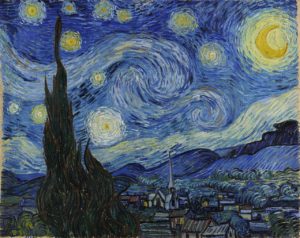 Explore one of two sun-drenched Provençal towns today, each with an allure all its own. Known for its remarkable Roman ruins, Arles so inspired Van Gogh that he painted some 200 paintings there; Tarascon boasts an ancient castle, as well as a local legend about a ferocious dragon. Arles has existed since the sixth century BC, when the ancient Greeks founded it and named it Theline. It was here that the Romans built their first bridge across the Rhône River, creating a vital overland route between Italy and Spain and facilitating the expansion of their empire. Long renowned as one of the region’s most attractive cities, it lured artist Vincent van Gogh, who painted hundreds of works here (including Sunflowers and The Yellow House) in just 15 months. A short distance from Arles is the ancient and charming town of Tarascon. Its many medieval sites include a 12th-century church and a 15th-century castle that is rich with tales of a beloved ruler. Bask in the warmth of the Provençal sunlight in either of these friendly Mediterranean towns.
Explore one of two sun-drenched Provençal towns today, each with an allure all its own. Known for its remarkable Roman ruins, Arles so inspired Van Gogh that he painted some 200 paintings there; Tarascon boasts an ancient castle, as well as a local legend about a ferocious dragon. Arles has existed since the sixth century BC, when the ancient Greeks founded it and named it Theline. It was here that the Romans built their first bridge across the Rhône River, creating a vital overland route between Italy and Spain and facilitating the expansion of their empire. Long renowned as one of the region’s most attractive cities, it lured artist Vincent van Gogh, who painted hundreds of works here (including Sunflowers and The Yellow House) in just 15 months. A short distance from Arles is the ancient and charming town of Tarascon. Its many medieval sites include a 12th-century church and a 15th-century castle that is rich with tales of a beloved ruler. Bask in the warmth of the Provençal sunlight in either of these friendly Mediterranean towns.A special Captain’s Farewell Reception and Dinner will be prepared for you this evening.
Arles walking discovery tour
Van Gogh paid tribute to Arles’s atmospheric beauty in some 200 paintings, including Starry Night Over the Rhône. It’s an ancient city boasting a remarkable collection of Roman ruins; among them are a theater where the famous —on display in the Louvre—was discovered in 1651 and an amphitheater that is still used for sporting events. Join a local expert for a stroll through this district, where medieval houses crowd in among the ancient structures and the city gates date to the 13th century. Pause before the town hall, built with stone quarried from the Roman theater, and the Romanesque St. Trophime Church, which was erected in the 12th century. It replaced the church where St. Augustine, the man who converted the inhabitants of England to Christianity, was consecrated by the first archbishop of Canterbury. Walk in Van Gogh’s footsteps past the cheery yellow Café de Nuit—still open and still the same shade of yellow it was when he painted it—and across Forum Square before visiting the town’s bountiful farmers’ market, which displays seasonal fruits and vegetables, medicinal herbs and many more specialties of Southern France. During your free time after the tour, you can peruse the local shops, go olive tasting or delve further into Arles’s stunning collection of architectural treasures.
Tarascon walking discovery tour
The stern castle walls rising from the Rhône, erected in the 15th century to defend valuable trade routes, could stand in for the Bastille, and indeed this castle was used as a prison for centuries (in fact, occupying German forces housed British prisoners of war in it). Owned by the dukes of Anjou, it was transformed into a splendid Renaissance palace by the duke known as Good King René for his generous patronage of the arts and his support of local fishermen. As you walk from the castle through the little town, you’ll find wonderful examples of Provençal architecture—civic buildings, houses and churches, including St. Martha’s Collegiate Church.
CLICK ON THE LINKS BELOW . . .
OVERVIEW
REVIEW THE ITINERARY | FIND OUT MORE ABOUT THE SHIP | PHOTO GALLERY
ALL INCLUSIVE PRICING | BOOK YOUR CRUISE NOW
Let’s take your next trip together!
Contact Joelle Cliff at terroirs.travels@gmail.com
by telephone: 805-443-7112 or 805-227-0830
Terroirs Travels™ is an Associate of Frosch Travel, one of the top ten leading travel management companies in America



